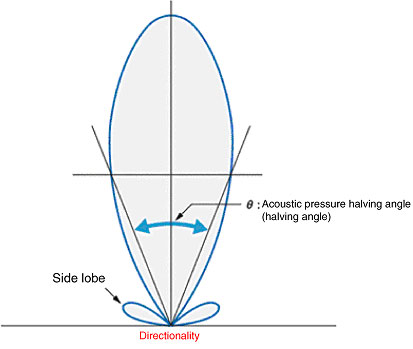What is meant by the directionality of Ultrasonic Sensors?
The ratio between the sound output of the non-directional wave transmitter (which is required to produce the necessary sound energy to provide to the target object) and the directional wave transmitter is called the directional gain.
The directionality improves as the frequency and the vibration area increase. This means that the sound waves can be generated with better efficiency.
The directionality of a Sensor that is used as an Ultrasonic Switch has an acoustic pressure halving angle of approximately 8° to 30°. The directionality varies largely depending on the shape of the sensor phone and the vibration mode of the oscillator. Therefore the shape of the Sensor, the usable frequency, and the types of oscillators are determined depending on the required operating range.